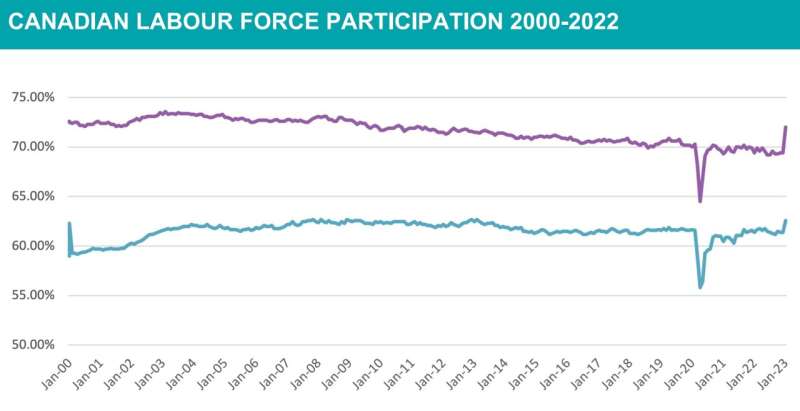This article has been reviewed according to Science X's editorial process and policies. Editors have highlighted the following attributes while ensuring the content's credibility:
fact-checked
trusted source
proofread
Report outlines how firms can effectively increase female representation

A recent report from Ivey Business School's Lawrence National Centre for Policy and Management introduces distinct strategies for achieving gender parity in the workplace, tailored to the predominant gender makeup of different industries.
Titled "Trickle-down and Bottom-up Effects on Workplace Gender Diversity," the report, based on research by Alison Konrad, a professor of organizational behavior at Ivey, leverages current diversity research to unveil gender disparities and provides practical guidance for organizations and policymakers to enhance female representation across corporate hierarchies.
To make an impact, start in the middle
The report underscores the nuanced nature of achieving gender parity and outlines a multi-step approach. It advocates for an initial analysis of the gender composition within workplaces to assess balance or imbalance toward males or females. Citing previous research, the report categorizes industries into male-tilted (16 to 39 percent women), female-tilted (61 to 84 percent women), and balanced (40 to 60 percent women).
For male-dominated industries, the report recommends deliberately hiring more women at the middle-management level. The presence of women in these positions serves as a catalyst, signaling organizational value for female voices and encouraging women to pursue non-management roles—a phenomenon termed the "trickle-down effect."
Conversely, in female-dominated industries, hiring more women in non-management roles fosters women's representation in middle and upper management—a "bottom-up effect."
"I'm very encouraged by our findings that hiring more women in non-management positions in these industries leads to a growth of women in lower to middle management," said Konrad. "This shows that diversifying the workplace at the bottom helps firms to identify female leadership talent."
Supporting and empowering at every level
While the Lawrence Centre researchers emphasized the importance of hiring women at a middle-management level, they stressed that hiring and promoting more women in top management positions should not be overlooked—especially in male-tilted industries.
The team urged firms to consider career progression and to create opportunities for female leadership training for middle managers—enabling them to hone the skills and knowledge required to take on higher leadership roles eventually. This would ensure women were hired, supported, and empowered at every level.
Konrad said the most troubling finding in the study was the lack of either a trickle-down or a bottom-up effect linking lower and middle management to the top management teams.
"These findings show that women's leadership talent does not flow 'naturally' across the entire pipeline and that firms must pay attention to career progress for women leaders to diversify their management ranks at all levels, including the very top," she said.
Noting the evidence shows women face systemic workplace challenges, Romel Mostafa, director of the Lawrence Centre, said overcoming these challenges involved a collective effort.
"Addressing the issue will require many firms to reconsider some of their existing human resources practices, and governments and other stakeholders to provide necessary guidance and support," he said. "Based on the evidence, this report offers some clear policy directions for the stakeholders concerned, and we hope it will set in motion collective action towards addressing this important issue."
More information: Report: www.ivey.uwo.ca/media/ebsfd5mc … down-jan-19-2024.pdf
Provided by University of Western Ontario




















